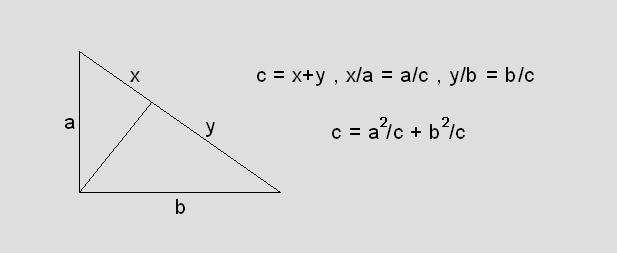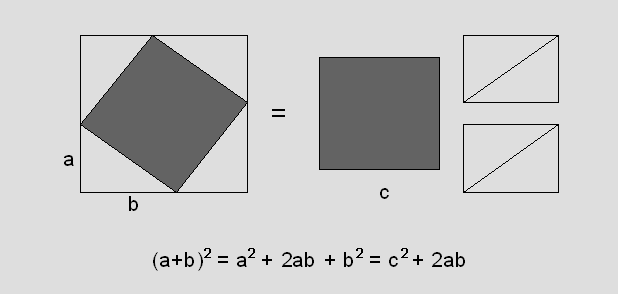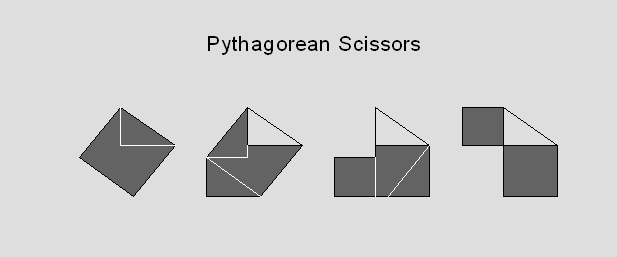Pythagorean Scissors
by Fred Bisshopp
Maybe there is an interesting connection between algebra and scissors,
and maybe not, but there surely is an interesting
connection between squares and right triangles. It was discovered by
Pythagoras of Samos, sometime near 500 B.C., and there is a proof of it
by Euclid - a proof I never could like well enough to memorize.
Fortunately, there are many other ways to prove
the Pythagorean Theorem, including some that use algebra and others
that use scissors. And it seems that the way we state the
theorem just might influence the way we go about trying to prove it.
Here are two statements of the Pythagorean theorem.
- From the Merriam-Webster's Collegiate Dictionary:
Pythagorean theorem n: a
theorem in geometry: the square of the length
of the hypotenuse of a right triangle equals
the sum of the squares of the lengths of the
other two sides.
- From the Oxford English Dictionary:
Pythagorean proposition or theorem, the 47th of the 1st book of Euclid, namely,
that the square on the hypotenuse of a right-angled triangle is equal to the sum of the squares on
the other two sides: said to have been discovered by Pythagoras.
While the MWCD speaks of the square of the length of ...
and reminds us of algebra, the OED speaks of the square on ...,
and that reminds us of geometrical objects that are not necessarily
defined by measurements and numbers. So here are
the outlines of three proofs in a sequence that runs from the very
algebraic to the very geometric.
- Algebraic:

This proof relies on a result from geometry: the construction line
that is perpendicular to the hypotenuse divides the right triangle in two
smaller triangles that are geometrically
similar to one another and to the larger one.
After that, the theorem is established by strictly alegbraic
manipulations of symbols.
- Both:

Here the four right triangles are congruent, and
the formulas for areas of squares and rectangles are used in a simpler
algebraic argument. If the theorem were restated to fit this proof
it might speak of the area of the square on ...
- Geometric:

This one has neither areas nor algebra - just scissors.
The proofs that the cuts and moves
can be made as shown all come down to
showing the congruence of simple geometric figures. The
trick was to draw the square on the hypotenuse below it,
rather than above it.
The moral of the story is that a theorem, however ancient, is not
something to be memorized and then forgotten, and its
proof is not graven in stone. Shall we expect the
next proof of Fermat's famous theorem to be a different one that
uncovers more of mathematics most of us didn't know
much about beforehand? Well, let's hope so!


